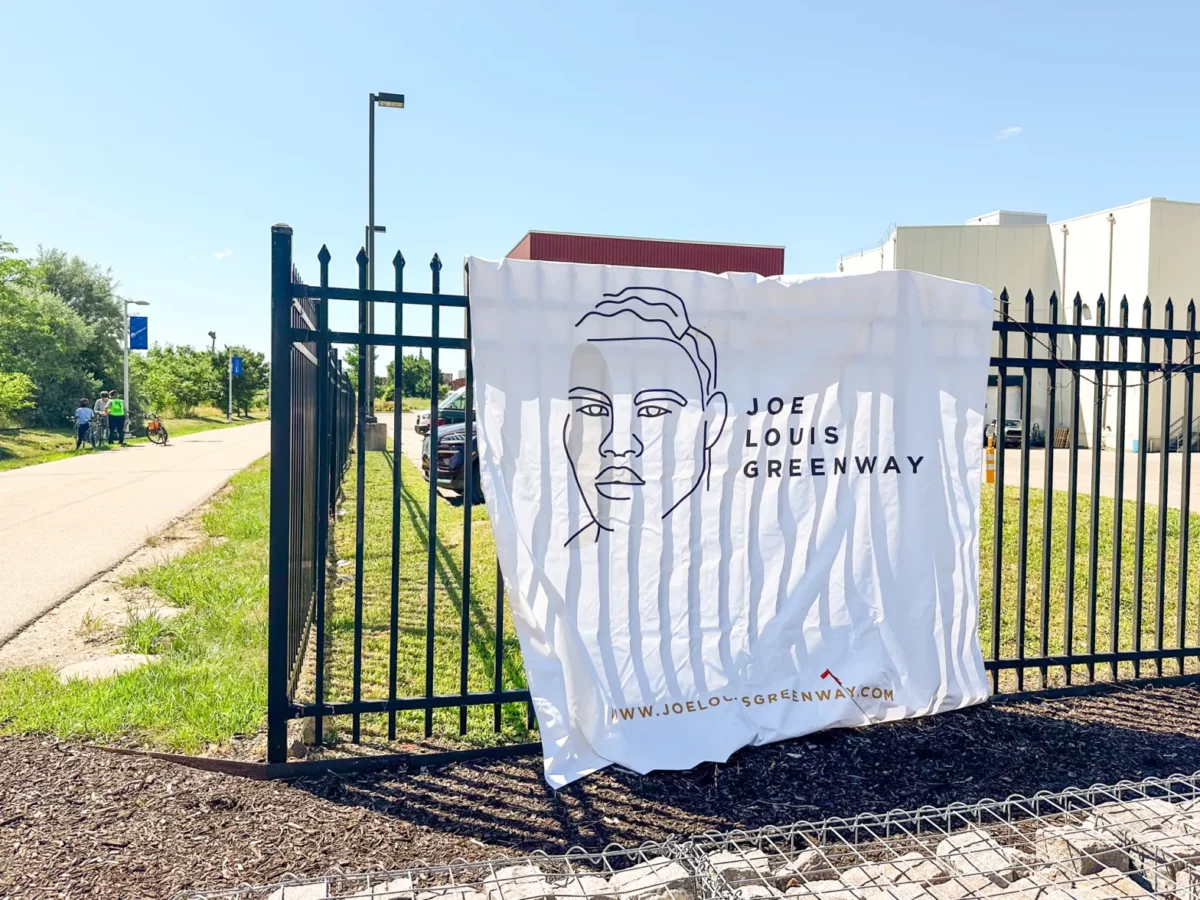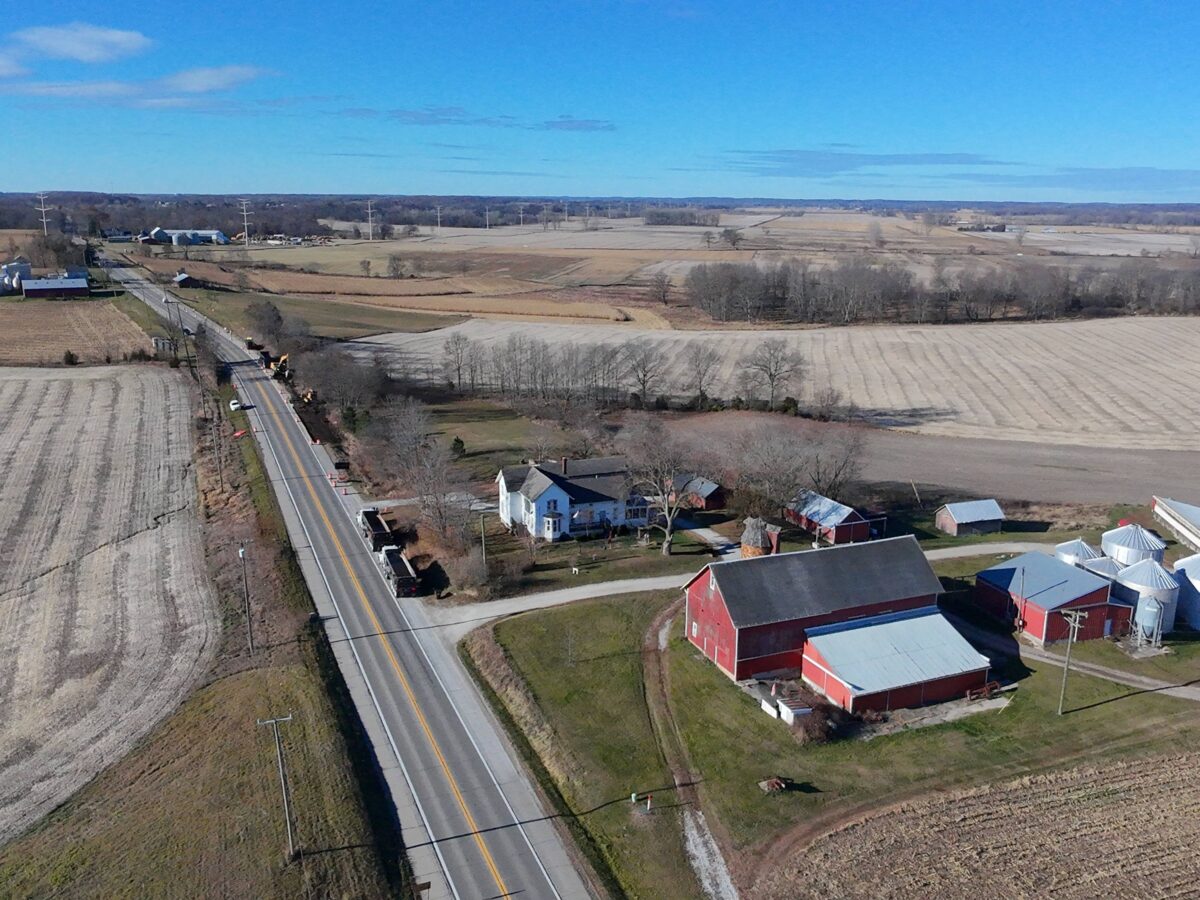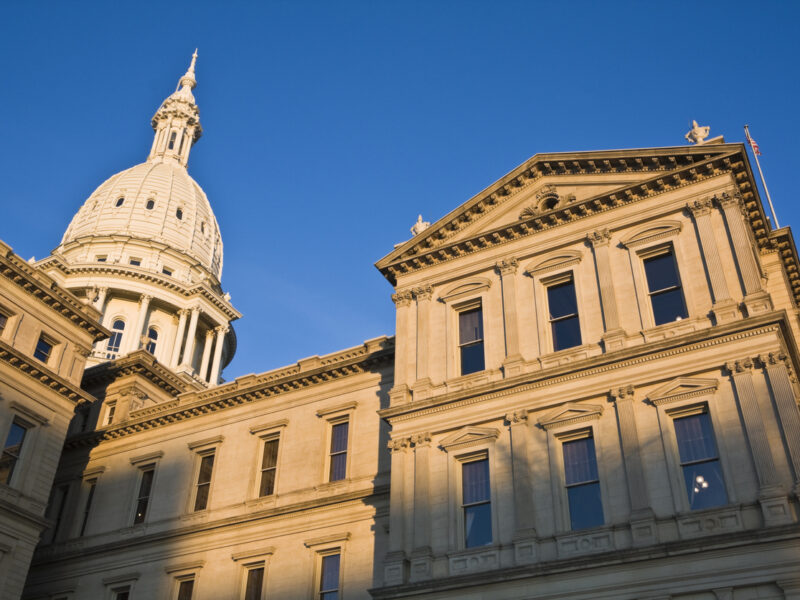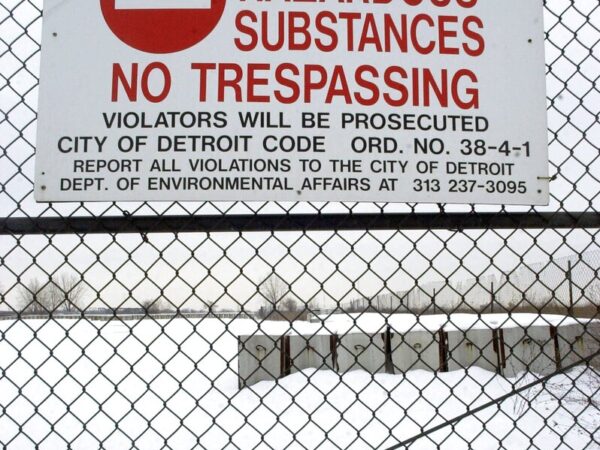Overview:
- A city project aims to downzone parcels adjacent to the Joe Louis Greenway.
- The rezoning would not affect current use, but would affect future use.
- "I was wondering how we're just going to skip that?" activist Jahdante Smith says of the Kronos concrete plant.
This story was originally published by BridgeDetroit, a nonprofit and nonpartisan news organization. To get regular coverage from BridgeDetroit, sign up for a free BridgeDetroit newsletter here.
City officials are engaging the community on a plan to rezone the heavy industrial parcels along the Joe Louis Greenway.
The greenway, a planned 29-mile, city-owned path, will connect parks and neighborhoods from Six Mile to the riverfront for biking and walking. Six miles of the greenway are already complete and the loop is expected to be finished in the next five to 10 years, depending on funding.
The rezoning project, led by District 3 Council Member Scott Benson, aims to downzone parcels adjacent to the greenway to make them more environmentally friendly. The impetus came several years ago at the urging of Benson, a known advocate for biking and sustainability.
Last year, amid ongoing dust complaints about the nearby Kronos concrete plant, Benson told BridgeDetroit he was working on the zoning initiative to be proactive in getting other sites along the greenway rezoned before something like another concrete plant could come in.
To start, city officials are proposing to rezone 18 M4 Heavy Industrial parcels in District 3 at I-75 and Six Mile to B4 General Business, SD2 Special Development Mixed-Use, and M2 Restricted Industrial. Details of the draft proposal were shared Tuesday at a community meeting held at Second Ebenezer Church with Benson and more than 30 community members in attendance.

Chris Goluck, deputy director of the City Planning Commission, said at Tuesday’s meeting that the process is just beginning.
“We’re really still doing the research, we’re trying to get community feedback and that’s why we’re here tonight to let you know about the study and get feedback,” he said.
A gas station, a church, a Coney Island, a junkyard, a Detroit Public Works yard and a post office are some of the establishments on the lots in the District 3 neighborhood that the city is looking to rezone. A number of the other lots are vacant. The rezoning wouldn’t impact current use, but would affect future use, like prohibiting a new factory from being built.
“We want jobs in the city…but we also don’t want anything that’s blowing toxic things onto the Greenway,” said Goluck.
“If the post office ever closed and it was bulldozed, someone could put an intensive industrial use there, so we’re proposing it to be (zoned) commercial,” he added.
Several residents at Tuesday’s meeting said they were concerned about the nearby Kronos concrete plant owned by Crown Enterprises, a subsidiary of the Moroun family. The plant, capable of mixing up to 200,000 tons of concrete per year, is located on land zoned M4 Heavy Industrial. Between the greenway and the concrete plant at 3405 Gaylord, Crown owns a number of other properties that it could expand onto.
Activist Jahdante Smith asked why the Kronos plant site, which he called a “giant eyesore,” isn’t being rezoned, even though it’s adjacent to Paris Bar and the gas station lots, which are proposed to be rezoned.
“I was wondering how we’re just going to skip that?” he asked.
Goluck said the current initiative is only focused on properties adjacent to the greenway; Crown’s properties are separated from the greenway by the gas station.
“Our office is monitoring [Kronos], council is monitoring it, the state’s monitoring it, but we’re not tackling it in this effort. Whether that happens in 2026 is possible, but the real issue is going to be the streets – will the city allow it to expand? It’s going to be up to the new mayor, really.”
The City Council would need to vote on any requests to transfer street ownership from the city to Kronos.
At Tuesday’s meeting, Smith also “publicly” invited Benson to an Oct. 10 protest “about the Kronos concrete facility and all the toxic dust it is emitting,” planned for Paris Bar. Smith said he submitted a complaint, including a video, regarding Kronos to Detroit’s fugitive dust email address, but was told the violation was resolved through a consent agreement. Smith was told to submit a Freedom of Information Act request to obtain a copy. BridgeDetroit asked for a copy of the consent agreement late Wednesday.
David Bell, director of the city’s Buildings, Safety Engineering, and Environmental Department, noted in a Thursday statement to BridgeDetroit that an inspector visits the Kronos site three times a week and hasn’t witnessed violations of the fugitive dust ordinance.
A nearby air monitor does not show elevated levels, he added. BSEED, Bell said, is also open to working with Smith to find additional homes to place air monitors to capture a larger sample size.
Bell also said that it’s “not true” that Smith was denied a copy of the consent agreement.
“It is standard for BSEED to direct requests for such legal documents to the FOIA process so the law department can decide what may be released. That is what we did in this case,” he said.
Bell said BSEED consulted with the Law Department about the agreement, which has been made available to others under prior requests, and will provide a copy to Smith without requiring a new FOIA.
Sharon Buttry, board secretary of the Detroit Hamtramck Coalition for Advancing Healthy Environments, which organized the protest, said she largely supported the proposal, but was dismayed that city officials did not bring up the Kronos concrete plant during the presentation.
“The Kronos property was decidedly missing from the Joe Louis Greenway Equation [Tuesday] and did not emerge in the conversation until the community brought it up as a source of harm and threat to our health and wellbeing,” she said.
Another Tuesday attendee, Hamtramck resident Yousef Alagi, supports the rezoning proposal.
Alagi bought a former restaurant in the area in 2023, knowing that the greenway would be coming in and wanting to be a part of positive change in the neighborhood he grew up in. After being vacant for several decades, Alagi restored the restaurant and reopened it as Holy Bowly.
The lot where Holy Bowly sits is set to be rezoned from M4 to B4 General Business.
“I think the rezoning is a good idea for the bike lane to make it more attractive to anybody who’s going to be riding their bike to go sightseeing, bring families and something for the community,” he said. “Especially in that area where we’re at, there’s really not much there.”
THE LATEST FROM PLANET DETROIT
Saline Township resident alleges data center settlement was improper: Township attorney says ‘everybody saw them vote’
Saline Township’s settlement with data center developer Related Digital was not properly approved, a resident says in new court filing.
Activists to rally in Lansing for statewide moratorium on new AI data centers
A rally on the Capitol lawn Tuesday will demand a halt to new AI data centers over fears of environmental impact and unchecked corporate benefits.
Michigan offers $2 million grants for brownfield cleanups
Michigan’s initiative to fund brownfield cleanups with grants up to $2 million aims to transform polluted sites into housing, parks, and commercial spaces, addressing both environmental and community development needs.
Goluck informed Tuesday’s attendees that the rezoning process takes four to six months per proposal. It starts with research, community outreach and feedback. Then the proposal goes to the City Planning Commission for a public hearing and vote. Notice is given to owners and taxpayers within 300 feet of the parcels that are proposed to be rezoned. If the proposal is approved by the commission, it goes to the City Council for a final vote.
To date, the Joe Louis Greenway team has held 263 meetings between stakeholders, neighborhood associations, and others, according to Tuesday’s meeting.
A City Planning Commission public hearing on the rezoning of the District 3 parcels will be held in December or January.
“This is a process. Rezoning takes four to six months,” said Benson. “This is maybe a half-mile. We have 58 more [half-miles] to go.”
Do you live, work, own a business, or visit family in Cadillac Heights off I-75 and Six Mile? We want to hear from you about what needs more attention. Take our survey.





